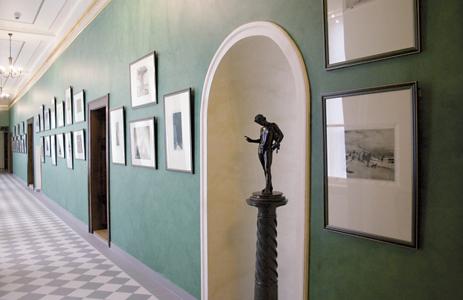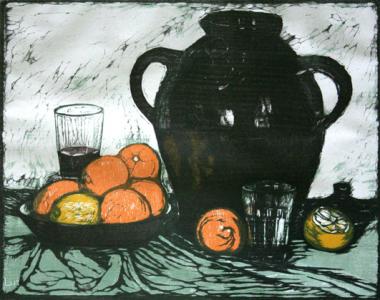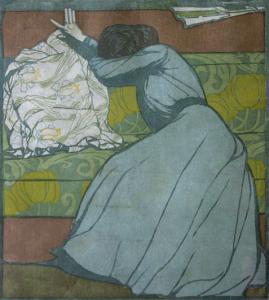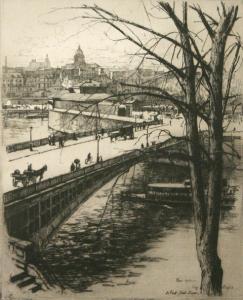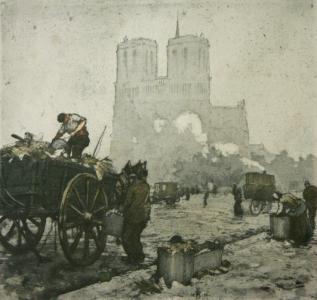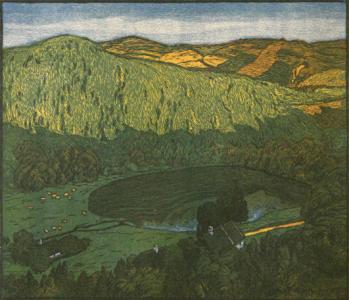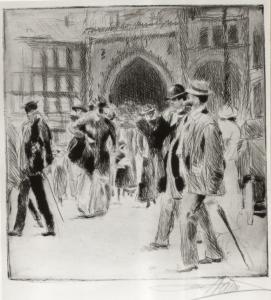Gallery of Prints from the turn of the 20th Century
The corridor running along the rooms in the east wing, from the direction of the interior courtyard of the Sułkowski Dukes’ Castle is dedicated to the presentation of artists’ print work, that is works in which the whole process of creativity – from the draft design itself, through the choice of appropriate technique and form of printing, to the preparation of print copies known as engravings – is in the hands of the artist. The works on display present an overview of all types of print techniques: offset, intaglio and relief printing, in single or varied colours; ranging from copperplate engraving, etching, aquatint, mezzotint, through linocut and lithographs to xylographs (woodcuts). They originate from a collection numbering almost 100 works, published in annual portfolios by the Vienna publishing house Jahresmappe der Gesellschaft für vervielfältigende Kunst between 1898 and 1922. At the turn of the 20th century the best European graphic designers from Austria, Belgium, the Czech Republic, France, the Netherlands, Germany, Poland, Switzerland and Italy worked with that publishing house. The predominant artistic theme related to various types of landscape, although there are also examples of still life and works of a symbolic or allegorical character.
Among the works on display, of note are the colourful lithographs of Polish artist Józef Rapacki, a Polish Jew, Armin Horowitz and two Austrians, Franz Wacik and Max Suppantschnitsch.
The incredibly time-consuming and difficult technique of coloured woodcuts, where a separate coloured block was used for each colour, was employed by the following: Carl Theodor Thiemann (German), Maximilian Kurzweil, Wilhelm Laage, Carl Moll and Josef Stoitzner (all Austrians), Adolf Zdrazila (Czech), and French artist, Paul Emil Colin.
Most of the prints are copperplates, similar to etchings, by accomplished graphic designers from France, Germany, Austrian Styria, the Czech Republic, Switzerland, Belgium, and the Netherlands. The colourful copperplate prints by Marten van der Loo are incredibly picturesque, reminiscent of watercolour painting.
[ed. TDB]
